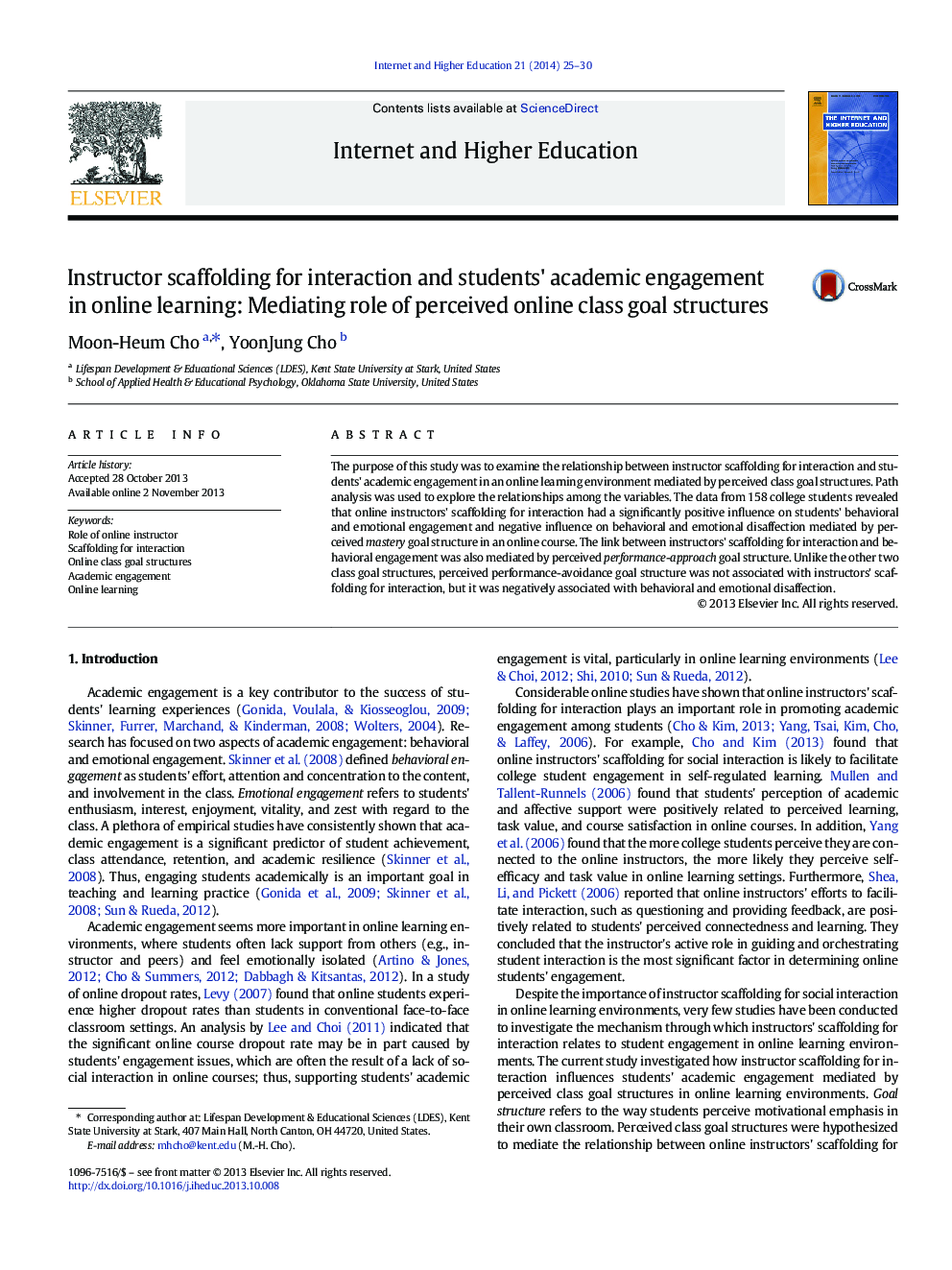| کد مقاله | کد نشریه | سال انتشار | مقاله انگلیسی | نسخه تمام متن |
|---|---|---|---|---|
| 357752 | 619948 | 2014 | 6 صفحه PDF | دانلود رایگان |
• Online teachers' scaffolding for interaction influenced students' perceived class mastery and performance-approach goal structures but did not influence perceived class performance-avoidance goal structure.
• Online students' perceived class mastery goal structure positively influenced their behavioral and emotional engagement and negatively influenced behavioral and emotional disengagement.
• Online students' perceived class performance-approach goal structure positively influenced only their behavioral engagement, not emotional engagement, emotional disaffection, or behavioral disaffection.
• Online students' perceived class performance-avoidance goal structure positively influenced their behavioral and emotional disengagement but negatively influenced behavioral engagement.
The purpose of this study was to examine the relationship between instructor scaffolding for interaction and students' academic engagement in an online learning environment mediated by perceived class goal structures. Path analysis was used to explore the relationships among the variables. The data from 158 college students revealed that online instructors' scaffolding for interaction had a significantly positive influence on students' behavioral and emotional engagement and negative influence on behavioral and emotional disaffection mediated by perceived mastery goal structure in an online course. The link between instructors' scaffolding for interaction and behavioral engagement was also mediated by perceived performance-approach goal structure. Unlike the other two class goal structures, perceived performance-avoidance goal structure was not associated with instructors' scaffolding for interaction, but it was negatively associated with behavioral and emotional disaffection.
Journal: The Internet and Higher Education - Volume 21, April 2014, Pages 25–30
